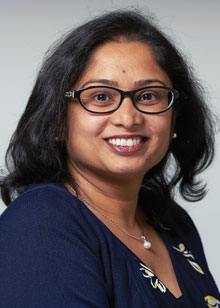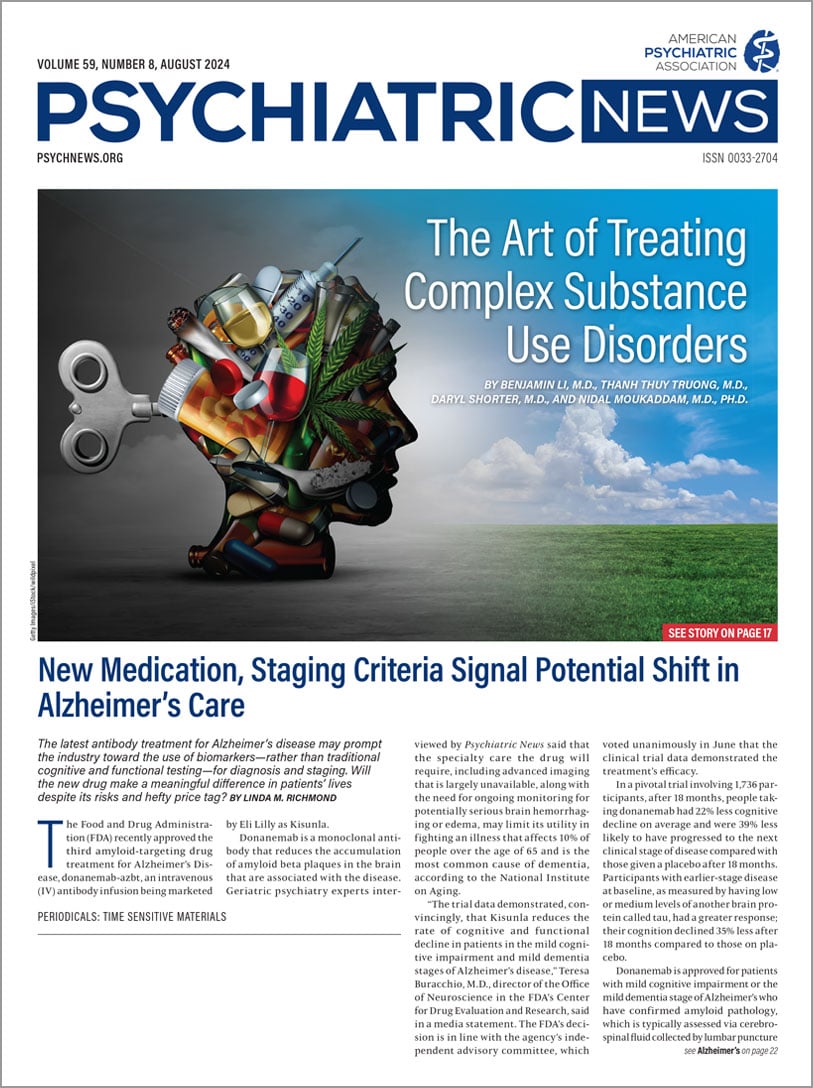By 2036, it is estimated that the United States will have
less than half of the psychiatrists needed to meet the country’s behavioral health demands, said Rashi Aggarwal, M.D., a professor of psychiatry and vice chair for education at Rutgers New Jersey Medical School. She led a session at APA’s Annual Meeting today that explored the future of the psychiatry workforce.
The looming gap is not due to a lack of enthusiasm for the field, noted Aggarwal, who is also the director of Rutgers’ Residency Training Program. She said that over 2,100 medical students joined psychiatry residency programs last year, compared with about 900 who became residents in 2003. “The demand is simply outpacing the supply,” she said. “What are the solutions?”
Many people will point to technology, but Aggarwal noted that while virtual care can help with the distribution of mental health resources across the country, it doesn’t improve the capacity problem. Several talks at this year’s meeting will focus on artificial intelligence (AI), but Aggarwal believes AI is still too immature as a technology to consider its potential in bridging the need gap.
One obvious route for support is to bring into the fold more nonphysicians with advanced training such as psychiatric nurse practitioners, an idea that Aggarwal acknowledged gets strong negative reactions. “I believe this is part of our future, and we should not be spending a lot of time and energy fighting battles we will lose,” she said.
But even bolstering the mental health workforce with advanced practice professionals will not be enough, especially in psychiatric subspecialties in which the workforce shortage is even greater, such as geriatric psychiatry and addiction psychiatry.
“A fundamental change in how we practice psychiatry has to occur,” Aggarwal said. “We were mostly trained on the ‘one psychiatrist, one patient’ model. What if we switch to team-based psychiatry care?”
Aggarwal used an inpatient ward as an example, but the overall idea could work in any setting. The professional staff would be divided into small groups with variable experience — such as a senior resident, junior resident, and nurse practitioner or equivalent. Each team would be responsible for a cohort of patients and report regularly to the supervisor for advice.
“For at least 50% of my patients, I could probably provide advice using just the medical chart,” Aggarwal said. “As inpatient supervisor in this model, most of my time would be spent on team management, with direct patient care reserved for the most complex patients.”
To optimize the team-based model, Aggarwal suggested re-imaging psychiatry education. “We worry about the shortage of psychiatry specialists in the future,” she said. “But rather than pushing more residents toward specialties, what if we trained more generalists who could be comfortable with patients of any age or condition?”
Aggarwal’s vision is that these generalist teams and supervisors would be mostly self-sufficient and that specialists would need to be called only for the rarest circumstances. “Importantly, the role of the specialist is only to consult; the patient stays under our management and our team learns from the experience,” she said. For example, rather than transferring a patient to a substance use treatment facility, an addiction specialist comes in and gives the team training to make team members more confident to manage substance use.
“I believe we can boost our reach 10-fold with a team-based approach,” Aggarwal continued. And training more generalists creates a more flexible workforce that can slide into new positions seamlessly.
Realizing this change in practice will be a long and bumpy process, as there are many established norms related to medical education. One change is that residents need to be trained early in the skills and credentials for various advanced practice professionals so that when they are team leaders, they know which patients to assign to the non-psychiatric team members. Broader training in collaborative care models will also be valuable for building strong teams.
From her discussions, Aggarwal believes the current crop of residents and students are amenable to rethinking their duties and responsibilities. “The obstacle will be more established psychiatrists like me; Are we ready to change our roles and become managers and team leaders rather than caregivers?
That’s not how we were trained years ago, but we need to be role models for any change to happen.” ■

